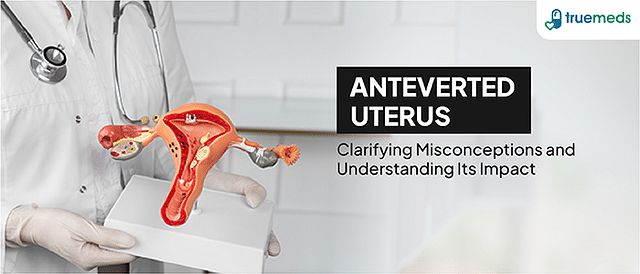Menstrual Cups: A Comprehensive Guide on How to Use, Benefits, and Considerations
Last updated on : 01 Dec, 2025
Read time : 10 min
A menstrual cup is a reusable feminine hygiene product designed to collect menstrual fluid. It is a tiny, flexible funnel-shaped cup, usually made of medical-grade silicone, rubber (latex), or thermoplastic elastomer, that is inserted into the vagina.
Because they can hold more blood than conventional feminine hygiene products, such as sanitary napkins or tampons (e.g., cups may hold up to three times the volume of a regular tampon) [1], menstrual cups are becoming increasingly popular for managing menstrual periods. Over time, menstrual cups may prove to be significantly more cost-effective than disposable products due to their long lifespan [2].
How Does a Menstrual Cup Work?
It is constructed from flexible, body-safe material, such as silicone or latex rubber, and is compact. Rather than soaking up your bodily fluids, it captures and stores them.
Just before your period begins, fold the cup in half and insert it like a tampon. You shouldn’t feel it if it’s used appropriately. The process is similar to inserting a diaphragm or a birth control ring.
It creates a gentle seal against the vaginal walls to help prevent leaks. The blood then flows into the cup without any fuss.
Some are meant to be discarded (single-use), while the majority are intended to be reused. To remove, pull the stem out of the bottom and pinch the base to dislodge the seal, then remove it. It’s as simple as emptying, sanitising, and reinstalling. Reusable cups should be sterilised in boiling water at the end of each cycle, following product instructions.
This article will provide a brief, detailed guide on how to insert and remove a menstrual cup safely.
Choosing the Right Menstrual Cup Size
It’s a good idea to consult your gynaecologist before switching, especially to choose the right size. These cups come in a variety of sizes, which means you’ll need to shop around to locate the right one for you. To do so, a professional may advise you to take into account factors like:
- Age
- The length of your cervix
- The capacity of the cup is determined by the volume of your menstrual flow.
- The menstruation cup’s elasticity and rigidity
- A history of vaginal child birth
There are normally two sizes of cups: small and large. Generally, smaller cups are often recommended for people under the age of 30 who have not given vaginal birth. A larger cup is typically recommended for those older than 30 years of age or who have had a vaginal birth. However, anatomy varies significantly, making professional advice crucial.
How to Insert a Menstrual Cup
The steps for using a menstrual cup are as follows:
- Using soap and water, thoroughly clean your hands.
- Using water to wet the cup or applying a small amount of a water-based lubricant on its rim can help you put the cup more easily into your vagina.
- Half-fold the menstrual cup into a ‘C’ fold or ‘punch-down’ fold, to make it more compact. When using a menstrual cup, make sure the rim is facing upward.
- Place the period cup in your vagina, rim facing up. The goal is to position the cup below your cervix.
- After insertion, rotating the cup by gripping the base can help create a secure seal to reduce leakage. You should feel a slight pop or hear a suction sound when the seal is formed.
- You won’t feel it if you place it appropriately in your vagina. In addition, you won’t have to worry about the cup coming out while you go about your daily business.
Generally, the menstrual cup can be worn for six to twelve hours without leakage. You can wear the period cup overnight if you have regular blood flow. The cup should not be worn for more than 12 hours at a time to maintain hygiene and minimise potential risks [3].
How to Remove Menstrual Cups
Menstrual cup insertion can be easier than removing, but with practice, removal becomes routine. It can be removed in the following ways:
- Using soap and water, thoroughly clean your hands.
- It’s okay if you’re a little apprehensive about doing this. Pull the stem of the cup gently until it reaches its base, then stop.
- You must break the seal by inserting a finger and gently pressing on the side of the cup. Then, squeeze the base of the container. Pull the cup out of the holder by the handle slowly and carefully, keeping it upright.
- Empty the cup into a toilet or sink, rinse with water, and reinsert.
- Reusable cups should be cleaned thoroughly with mild, unscented soap and water before reinsertion.
Advantages of Using a Menstrual Cup
Menstrual cups offer several advantages over traditional products:
- Cost-Effectiveness and Longer Lifespan: A period cup has a longer lifespan than a sanitary pad or tampon. Some health experts suggest replacing the cup every 1–2 years, while some brands indicate a lifespan of up to 10 years, depending on usage and brand guidelines [2]. It will cost you less to buy a cup than it will to buy tampons and sanitary napkins each year.
- Extended Wear Time: Tampons and sanitary napkins should be changed every five to six hours. These cups allow you to go up to 12 hours between changes without having to worry about leakage or changing them [3].
- Higher Capacity: In comparison to tampons and sanitary napkins, period cups may hold two to three times as much blood, allowing for longer wear time, especially for those with a heavy flow [1].
- Reduced Leak Risk: Using a cup correctly can greatly reduce the risk of leaks by forming a seal against the vaginal wall.
- Less Irritation: Some users may experience irritation with pads, which may be reduced with menstrual cups, as they are often made from non-absorbent, hypoallergenic, medical-grade materials [4].
- Eco-Friendly: Reusable cups are considered more eco-friendly since they significantly reduce monthly waste compared to disposable products.
- Potential for Less Odour: Because blood is not exposed to air, some users notice less odour during use.
- Reduced Risk of Toxic Shock Syndrome (TSS): Unlike tampons, menstrual cups are not associated with a significantly increased risk of TSS, as they collect rather than absorb fluid [5]. However, proper hygiene and adherence to the 12-hour limit are crucial.
Considerations for Using a Menstrual Cup
Even though menstrual cups are a cost-effective and environmentally responsible solution, there are still a few considerations:
- Potential for Messy Removal: You may be in a situation where it’s difficult or uncomfortable to remove your cup. As a result, you may not be able to avoid any spills throughout the process of cleaning up, especially when using public restrooms without a private sink.
- Initial Learning Curve: Getting them in or out can be a challenge initially. The menstrual cup insert may not acquire the desired fold, or you may find it difficult to pinch the base of the cup and break the seal. Practice and patience are often required.
- Sizing Challenges: Because period cups are not one-size-fits-all, finding the perfect one can be a challenge. Because of this, you may have to try a few brands before discovering the one that works best for your body. Consulting a gynaecologist is highly recommended for proper sizing.
- Risk of Allergic Reactions: Most menstruation cups are latex-free, making them an excellent choice for those who are allergic to the material. However, some people may be allergic to the silicone or rubber used in the product.
- Vaginal Irritation: To avoid irritating your vagina, be sure to clean and maintain your cup according to the manufacturer’s instructions. Using no lubricant during insertion could potentially cause discomfort.
- Risk of Infection: Proper cleaning and hygiene are important to reduce the risk of infection. If the cup is not cleaned and sterilized regularly, it can potentially harbor bacteria, though the overall risk of infection is generally considered low [5].
Menstrual cups are a sustainable and reusable option for period care. Using a menstrual cup instead of tampons and sanitary napkins saves money and reduces environmental impact. Before making the switch to a menstrual cup, consider assessing its benefits and drawbacks and, most importantly, discussing period cup use with your gynaecologist if you are still undecided about the best solution for you.
Conclusion
Menstrual cups are a sustainable and reusable option for period care. With proper use and hygiene, they offer extended protection, fewer leaks, and reduced risk of irritation. Although some users may face challenges during insertion or removal, these usually improve with practice. Choosing the correct size, material, and brand that suits your body and style is essential. Consulting a gynaecologist before switching can ensure the best experience and comfort.
Disclaimer:
This content is intended for informational purposes only and is not a substitute for professional medical advice, diagnosis, or treatment. Always consult your gynaecologist before making changes to menstrual hygiene routines. Individual experiences may vary based on anatomy, health, and product choice.
Frequently Asked Questions
Can I sleep with a menstrual cup in?
Yes, if inserted correctly, you can wear a menstrual cup overnight, but it should not exceed 12 hours of continuous use.
How do I know if my menstrual cup is inserted correctly?
If it sits comfortably without leakage and you can’t feel it, and if it has formed a seal (which you can often confirm by gently running a finger around the base of the cup), it’s likely positioned correctly.
Is a menstrual cup better than pads or tampons?
It depends on personal preference, but menstrual cups offer longer wear time, lower cost over time, and reduced waste. Studies have also shown high rates of satisfaction among users [2].
How often should I sterilise my menstrual cup?
Sterilise your reusable cup at the end of every cycle by boiling it in water for 5–10 minutes, or as per the manufacturer’s specific instructions.
References
[1] Singh, R., Agarwal, M., Sinha, S., Chaudhary, N., Sinha, H. H., & Anant, M. (2022). Study of adaptability and efficacy of menstrual cups in managing menstrual health and hygiene: A descriptive longitudinal study. Cureus, 14(9), e29690. https://doi.org/10.7759/cureus.29690
[2] Van Eijk, A. M., Zulaika, F. N., Lenchner, M., Mason, L., Stanly, P. A., Morgan, C. E., & Phillips-Howard, P. A. (2019). Menstrual cup use, leakage, acceptability, safety, and availability: A systematic review and meta-analysis. The Lancet Public Health, 4(8), e376-e393. https://doi.org/10.1016/S2468-2667(19)30111-2
[3] Benskey, J., & Doshi, S. (2022). What Are Menstrual Cups? JAMA, 328(11), 1168. Retrieved October 29, 2025, from https://jamanetwork.com/journals/jama/fullarticle/2821547
[4] Pfeiffer, A., Koidl, L., & Schick, A. (2024). Menstrual cups—An alternative option for menstrual hygiene management: A prospective observational study on safety and efficacy in daily use. Women’s Health, 20. https://doi.org/10.1177/17455057241251919
[5] Mitchell, M. A., & Safadi, K. (2018). Toxic shock syndrome: An update. The Lancet, 391(10137), 2326-2338. https://doi.org/10.1016/S0140-6736(18)30674-8
Disclaimer
Our healthcare experts have carefully reviewed and compiled the information presented here to ensure accuracy and trustworthiness. It is important to note that this information serves as a general overview of the topic and is for informational purposes only. It is not intended to diagnose, prevent, or cure any health problem. This page does not establish a doctor-patient relationship, nor does it replace the advice or consultation of a registered medical practitioner. We recommend seeking guidance from your registered medical practitioner for any questions or concerns regarding your medical condition.
Popular Articles
Recommended Articles
Recent Articles
Company
About UsHealth ArticleHealth StoriesHealth LibraryDiseases & Health ConditionsAyurvedaAll MedicinesAll BrandsNeed HelpFAQSecuritySubscribe
Registered Office Address
Grievance Officer
Download Truemeds
Contact Us
Our customer representative team is available 7 days a week from 9 am - 9 pm.
v4.9.0
2025 - Truemeds | All rights reserved. Our content is for informational purposes only. See additional information.
Our Payment Partners














































